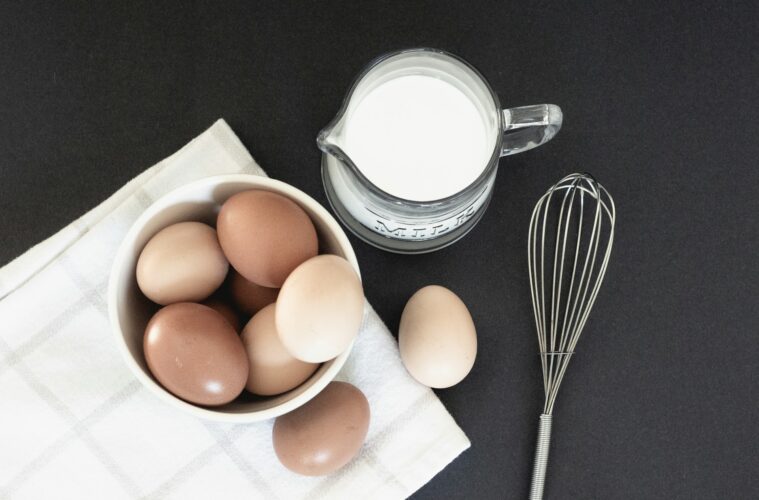In the realm of baking, the type of milk you choose can significantly impact the flavour, texture, and overall success of your creations. With various milk options available, from dairy to plant-based alternatives, navigating the choices can be overwhelming. This comprehensive guide explores the different types of milks for baking, their characteristics, and when to opt for one over another.
Whole Milk
Whole milk, containing around 3.5% fat, provides a rich and creamy base for baked goods. Its higher fat content contributes to moistness, tenderness, and a luscious mouthfeel. Whole milk is a versatile choice for a wide range of recipes, including cakes, muffins, and cookies, where a velvety texture is desired.
2% (Reduced-Fat) Milk
Reduced-fat milk with approximately 2% fat content is a lighter alternative to whole milk. While it retains some richness, it offers a slightly leaner profile, making it suitable for recipes where a balance between moisture and a lighter texture is desired. This type of milk works well in many baking applications without compromising on flavour.
1% (Low-Fat) Milk
Low-fat milk, containing around 1% fat, is a leaner option that still imparts moisture to baked goods. It is often chosen for those seeking to reduce fat content without sacrificing too much richness. Low-fat milk can be used in various recipes, including pancakes, waffles, and certain cakes.
Skim (Fat-Free) Milk
Skim milk, with minimal fat content, is a suitable choice for those aiming for the lightest texture in their baked creations. While it may not provide the same richness as higher-fat options, skim milk is preferred in recipes where minimising fat is a priority, such as in certain bread and pastry applications.
Buttermilk
Buttermilk, despite its name, is a cultured dairy product with a tangy flavor and thick consistency. It contributes acidity, tenderness, and a unique taste to baked goods. Buttermilk is a key ingredient in recipes like biscuits, pancakes, and some cakes, where its acidity reacts with baking soda to leaven the batter.
Evaporated Milk
Evaporated milk is a concentrated dairy product with about 60% of the water removed. It adds richness without the excess liquid content, making it suitable for recipes like fudge, custards, and certain pies. Reconstituting evaporated milk with water can approximate the richness of whole milk.
Sweetened Condensed Milk
Sweetened condensed milk is a thick, sweetened product with much of the water removed. It is commonly used in dessert recipes, such as fudge, caramel, and certain pies. The sugar content in sweetened condensed milk adds sweetness and contributes to the texture of the final product.
Plant-Based Milk Alternatives
For those following a dairy-free or vegan lifestyle, various plant-based milk alternatives are available, including almond, soy, oat, coconut, and rice milk. These alternatives can be substituted for dairy milk in most recipes, although adjustments may be needed based on the specific characteristics of each type. Plant-based milks bring their own unique flavours and textures to baked goods.
Considerations for Milk Substitutions
When choosing a milk substitute, consider the flavour profile, consistency, and potential allergens. Almond milk adds a nutty undertone, while coconut milk imparts a tropical essence. Soy milk is a versatile option with a creamy texture, and oat milk provides a subtle sweetness. It’s crucial to choose unsweetened varieties when a neutral flavour is preferred.
Extended Insights on Milk Choices in Baking
In addition to the primary considerations of fat content and richness, there are further nuances to explore when selecting milk for baking. Whole milk, with its higher fat content, is favored in recipes where a luxurious texture is paramount, such as in classic cheesecakes or creamy custards. 2% and 1% milk strike a balance between richness and a lighter touch, making them suitable for various baked goods, including scones and muffins.
Buttermilk, a cultured dairy product, not only provides acidity but also lends a tender crumb and unique flavor to items like pancakes and red velvet cake. For those seeking dairy alternatives, plant-based milk options like almond or soy bring their distinct profiles to recipes, contributing nuttiness or creaminess, respectively.
Understanding the role of milk in baking allows for intentional choices based on the desired outcome. Whether enhancing richness, introducing tanginess, or accommodating dietary preferences, the world of baking becomes a canvas for creative expression, and the right milk choice plays a crucial role in achieving the perfect balance of flavour and texture in your delectable creations.
Conclusion: Tailoring Your Baking Experience
Choosing the right milk for baking involves considering the desired outcome of your recipe. Each type of milk brings its own characteristics, impacting the flavor, texture, and moisture content of your baked goods. Whether you opt for the richness of whole milk, the tanginess of buttermilk, or the plant-based alternatives, understanding the role of each type allows you to tailor your baking experience and create delectable treats that suit your preferences and dietary choices. Experimenting with different milk options can open up a world of possibilities, enhancing the artistry of your baking endeavors.

